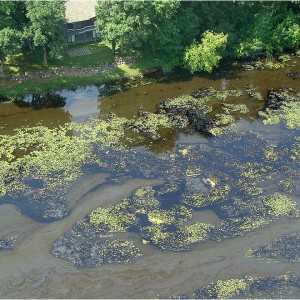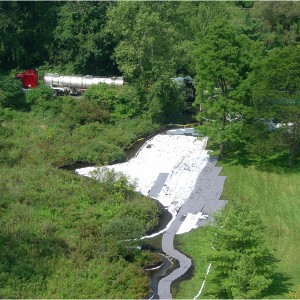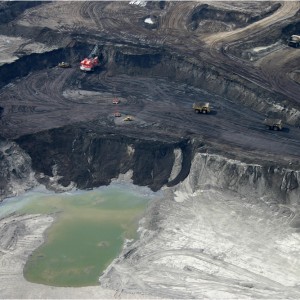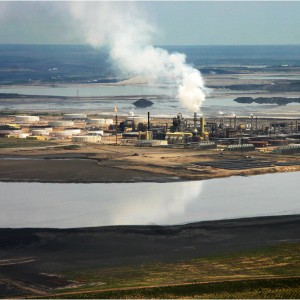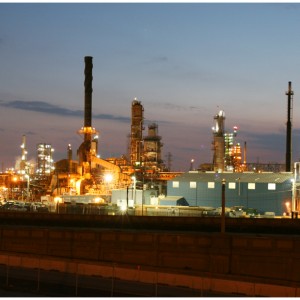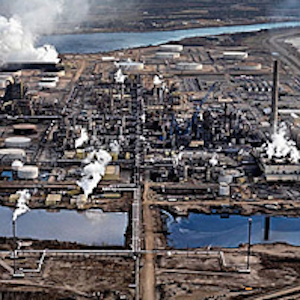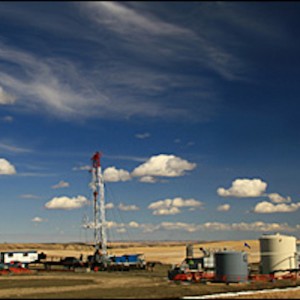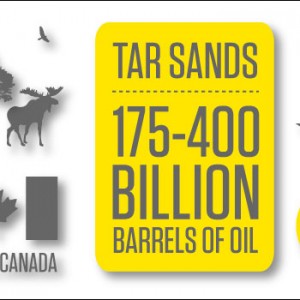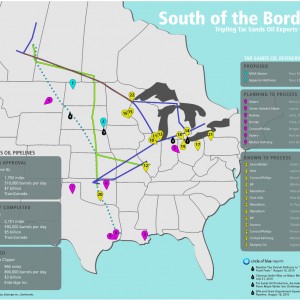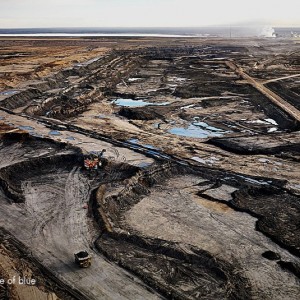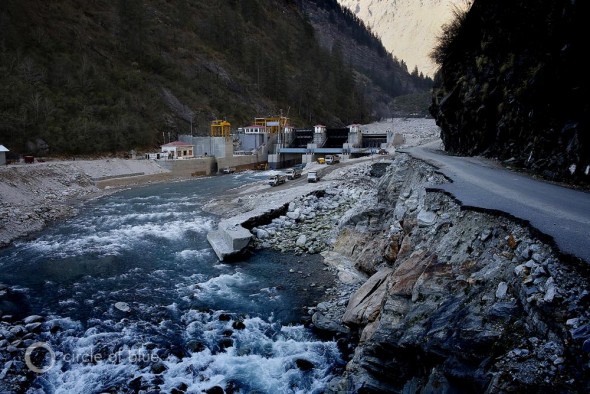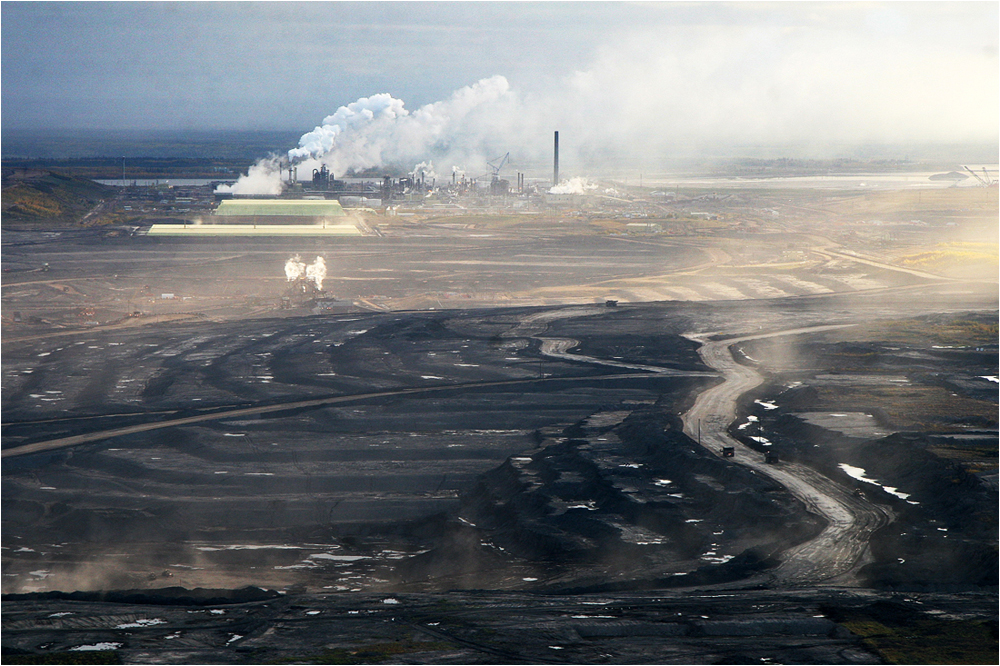Energy producers are spending $15 billion a year to triple oil production from the bitumen-saturated tar sands of northern Alberta, Canada, which are the largest source of oil imports to the U.S. pipeline companies. These companies are spending $31 billion to ship oil from Alberta to U.S. refiners in the Heartland, Great Lakes and Gulf coast. Refiners are spending more than $20 billion to expand refineries to process tar sands oil into transportation fuels.
Alberta’s tar sands are at the leading edge of a new era of hydrocarbon development in North America and the world. Instead of drilling into “conventional” underground pools of oil and natural gas, developers are probing “unconventional” reserves. They are mining and processing tar sands and oil shales, and essentially steaming out the oil, or splintering deep geologic layers of shale to liberate natural gas.
Oil companies and the State Department assert that increasing the supply of Canada’s tar sands is in America’s strategic and economic interest. Oil from tar sands replaces diminishing supplies from conventional oil reserves, and provides petroleum imports from America’s most important trading partner. But critics assert that developing tar sands and other unconventional reserves will require more water, produce more climate-changing emissions and ruin more land as well as natural habitat than the conventional oil reserves they’re replacing. In July, the U.S. Environmental Protection Agency intervened in the permitting of a proposed $7 billion-tar sands oil pipeline from Canada to the Gulf coast. It is the first time a federal agency has taken action to rigorously assess the effects of pipeline construction and tar sands development on water, the climate, water, land and communities.
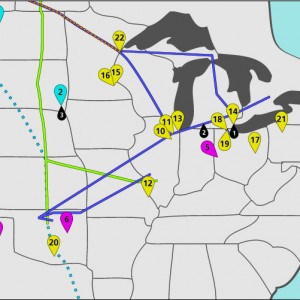 https://www.circleofblue.org/wp-content/uploads/2011/05/tarsands_map_rebecca_590.jpg
501
594
Brett Walton
https://www.circleofblue.org/wp-content/uploads/2018/06/Circle-of-Blue-Water-Speaks-600x139.png
Brett Walton2011-05-05 12:05:372016-03-10 13:42:44South of the Border—Second Environmental Review of Tar Sands Pipeline Leaves Many Groups Unsatisfied
https://www.circleofblue.org/wp-content/uploads/2011/05/tarsands_map_rebecca_590.jpg
501
594
Brett Walton
https://www.circleofblue.org/wp-content/uploads/2018/06/Circle-of-Blue-Water-Speaks-600x139.png
Brett Walton2011-05-05 12:05:372016-03-10 13:42:44South of the Border—Second Environmental Review of Tar Sands Pipeline Leaves Many Groups Unsatisfied
